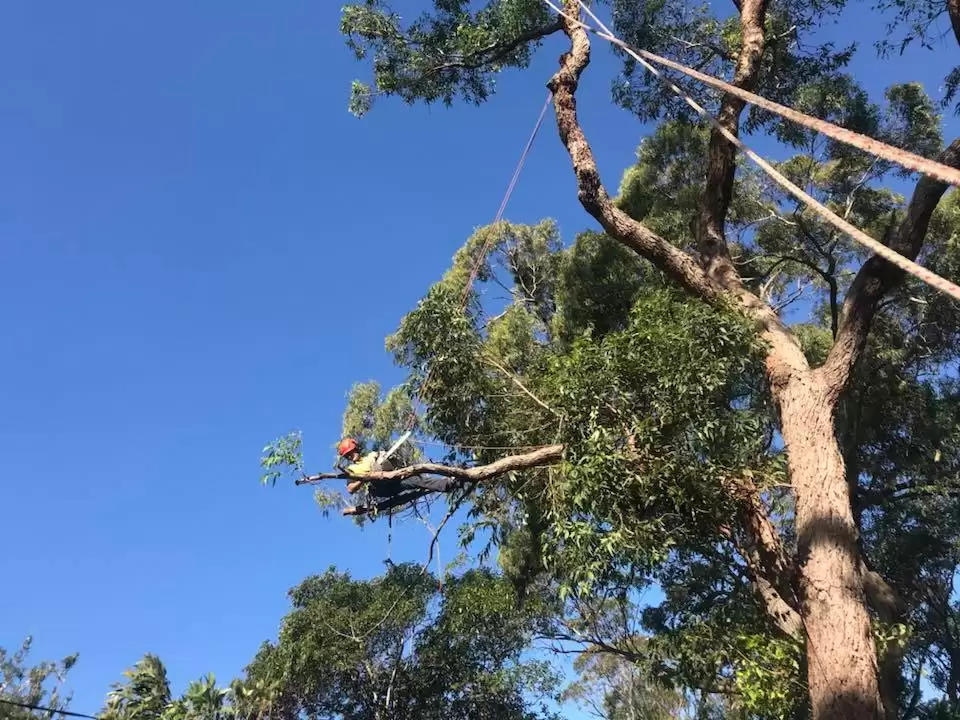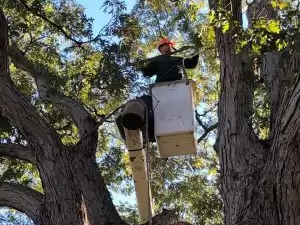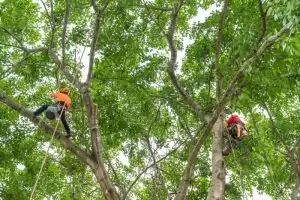The oak is a lovely tree that supports a wide variety of fauna, but it does require some maintenance to stay strong, healthy, and handsome. If you do not take care of your oak and allow it to grow wildly, it may become infected and deadly. In this article we will discus the best time to trim oak trees.
Regular trimming cannot be overstated, especially because canopies can become exceedingly wide, often blocking light and views. And then there are the strong, heavy branches, which are prone to shedding if not frequently treated, posing a risk of injury or property damage.
The Best Time to Trim Oak Trees
Young oaks
Young oaks are pruned to promote growth and will respond well to proper pruning, usually sprouting copious new growth. They should be pruned in mid to late winter: December and January are the months The reason this is significant is that bugs can be responsible for the spread of disease.
The simplest strategy to prevent fungal spores from spreading is to cut down trees during the winter months, when the majority of bugs are either hiding or have been killed by frost.
Mature oak trees
Mature oak trees are typically pruned to solve a problem, such as blocked light and airflow, or to reduce the chance of dead branches falling. While there are no hard and fast rules for pruning mature trees, which can technically be trimmed back to remove dead, diseased, or weak limbs at any time of year, wound closure and growth are generally improved if the pruning is done before the growing season begins in spring.
Tree trimming or pruning is often best done after temperatures have cooled in the fall and before buds begin to grow in the spring. Limbs that are dead, fractured, or injured can be removed at any time. The worst time to prune a tree is right after it has budded out in the spring. Because the tree has already expended its energy on new growth, it will be unable to recover as effectively or as rapidly from the cutting.
Other consideration:
Dormant Season:
The optimal period for oak tree pruning is during the dormant season (late fall to early winter or late winter to early spring). The tree is not actively developing at this time, which reduces stress and the possibility of disease transmission.
Local Climate:
Depending on your location and climate, the timing may vary. In milder climates, you may be able to prune in late fall, whereas harsher climates may necessitate waiting until early spring.
Oak Wilt Risk:
If you reside in an area where oak wilt disease is common, it's critical to avoid pruning during the growing season (usually April through June) to reduce disease transmission. Check with your local government for oak wilt rules.
Tree Age:
To build a strong structure, young oak trees often benefit from formative pruning during their early years. This can be done during the dormant season or whenever it is required.
Pruning Purpose:
Consider why you're pruning the oak tree. The most common causes are to remove dead or diseased branches, improve structure, or reduce canopy size. Each objective may have slightly different time constraints.
Animals Considerations:
Keep an eye out for animals, such as breeding birds, that may be on the tree. To prevent disruption, avoid pruning during nesting seasons.
Check for any local restrictions or permits that may be required for cutting oak trees. Some areas have particular regulations in place to safeguard native oak populations.
The Risk of Summertime Oak Tree Trimming
Oak wilt is a deadly fungal disease that affects oak trees. Even though oaks are powerful and huge trees, this fungus can bring even the most robust tree down. It most usually occurs when a tree is pruned at the incorrect time of year, also known as midsummer.
The Importance of Oak Tree Pruning
Expertise in oak tree pruning is vital for the health, safety, and longevity of these majestic trees. A skilled arborist's knowledge ensures proper techniques are employed, minimizing stress on the tree and preventing the transmission of diseases like oak wilt.
They can assess the tree's overall health, address structural weaknesses, and achieve desired aesthetic outcomes while adhering to local regulations.
Furthermore, seasonal timing expertise ensures that pruning occurs during the dormant season, lowering stress and increasing the tree's resilience. Finally, oak tree pruning expertise protects these priceless assets, ensuring their environmental contributions and beauty for future years.
FAQS
Can I trim my young oak tree to shape it?
Yes, formative pruning for young oak trees is essential to establishing a strong structure. However, avoid pruning during the active growing season.
What if my oak tree has dead or diseased branches?
If you notice dead or diseased branches on your oak tree, it's essential to prune them promptly, regardless of the season. Removing these branches helps prevent further damage to the tree.
What is oak wilt, and why is it a concern?
Oak wilt is a deadly fungal disease that affects oak trees. Pruning during the growing season can expose oak trees to oak wilt, which is a significant concern for their health.
Are there any local regulations about oak tree pruning?
Yes, many locations have specific restrictions and standards for pruning oak trees, particularly in oak wilt-prone areas. Before pruning, make sure to verify with local authorities.
Conclusion
The best time to trim oak trees is late winter or early spring, when they are dormant. Pruning during this time reduces stress on the tree, reduces disease transmission risk, and promotes optimal wound healing. Proper oak tree pruning is critical for their health, safety, and appearance. When dealing with more substantial pruning needs, remember to consult a professional arborist.




